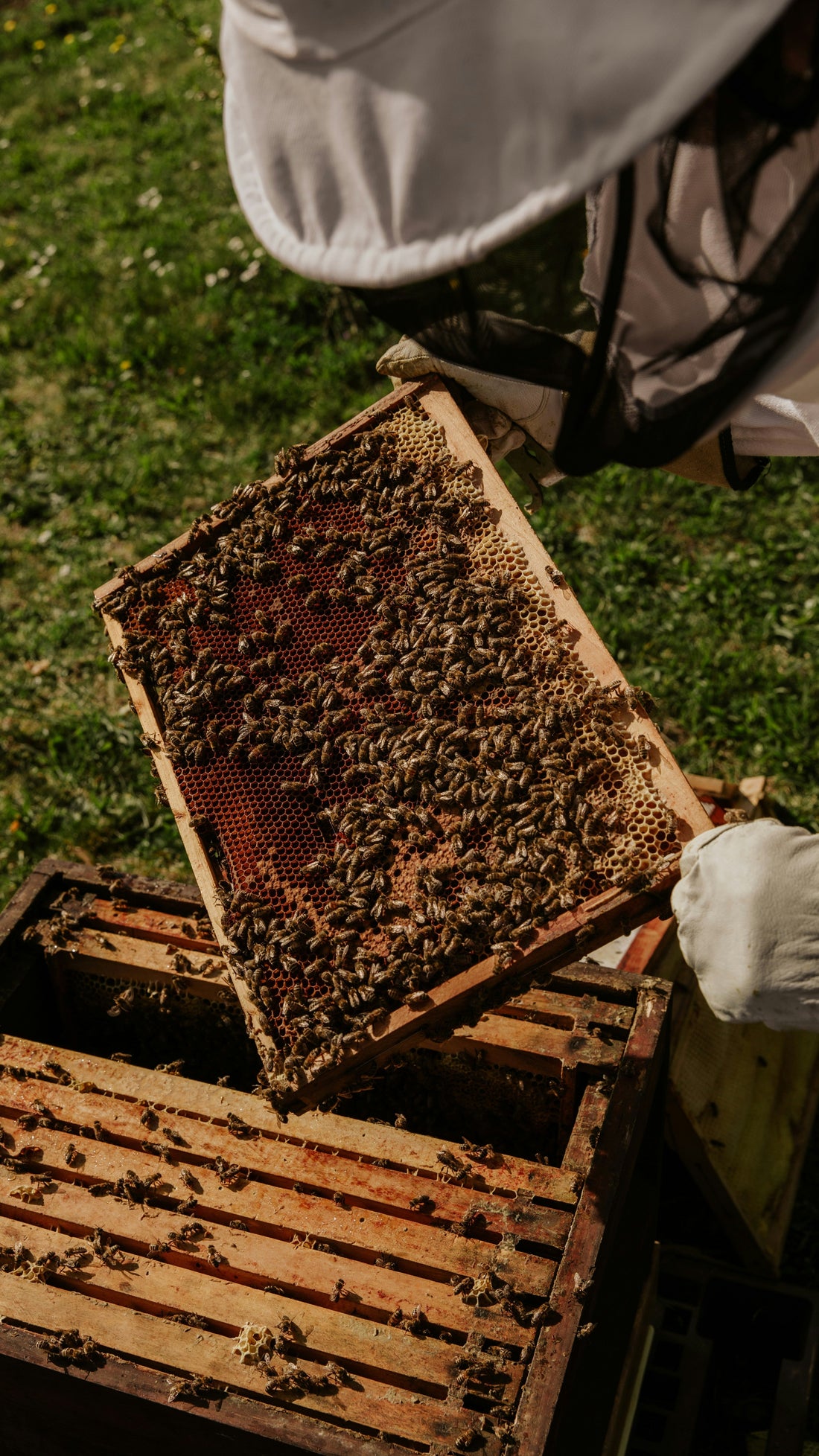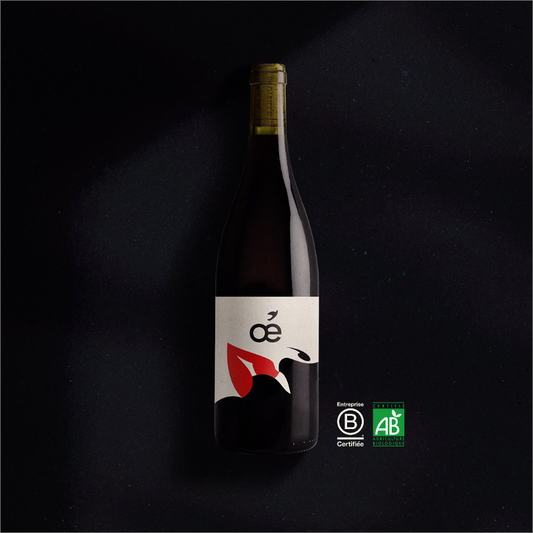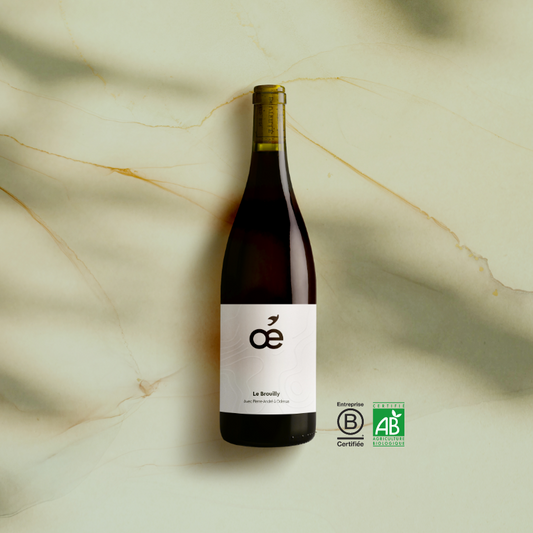After visiting our Oé winegrowers and talking about biodiversity, we also discussed the subject of pollinators, which are important for the life of the vine. And it is at François, winegrower of your Côtes de Bergerac that the beekeeper Gilles chose to put his hives; and at Fabien, winegrower of your Vaucluse Principality of Orange that Olivier installed his bees. Let's go for a topo on our exchange with them!

Hives in the heart of the vines
A few years ago, it would have been impossible to put beehives in the vines. Most of the vineyards being conventional, the bees suffered far too much from the pesticides that could often cost them their lives. Now that beekeepers are seeing the vines of certain winegrowers organic, it gives them hope. It was from that moment, and meeting François a few months ago now that Gilles decided to install his hives in the middle of the vines, which are full of flowers and plants between the rows (and yes, this is how great winegrowers take care of their vines). For his part, Olivier has chosen to install his hives at Fabien's because, in Bollène, it is warmer than in Savoie where Olivier lives. Bees therefore benefit from healthy vines and longer sun exposure!
Putting hives in the middle of the vines activates pollination and contributes to having a varied biodiversity within the ecosystem. You should know that each bee produces 18 grams of honey during its lifetime, which is approximately one spoon of honey. This is why “real” honey is expensive. 100 million flowers are visited by our friends to produce the famous kilo of honey. It's crazy, and yet it is these pretty young ladies who do all this. For more numbers, head over to this article .

How is it in the hives?
Depending on the season, many things are happening in the hives. Here is an outline of the stages of the “beekeeping calendar”:
- From February to April, it is the end of wintering. The beginning of the season begins with our friends the bees. They begin to roam the surrounding fields and vineyards to take advantage of the good spring pollen.
- From April to June, the honey produced is spring honey. In the hive, the beekeeper renews the livestock, raises and produces swarms and performs his first transhumances (when he moves the hives to forage his bees in another place)
- From June to July, there is the summer honey flow. The beekeeper raises and again produces swarms.
- From August to October, these are the last honey flows of the year. The bees are prepared for wintering with treatments to protect them from certain viruses, and the last transhumances from one place to another are carried out.
- From November to February, the bees are in winter and the beekeeper maintains the hives, the frames that compose them, and all the equipment necessary to take care of his pollinators.
Depending on the regions, the vagaries of the weather and the viruses that bees contract linked to pesticides from neighboring fields, the schedule may change. Then we add to that a jarring of the honey throughout the year: from the harvest, to the transformation to the marketing, it is a rigorous work. Just like with our friends the winegrowers!

Honey: a highly controlled consumer good
At our two beekeepers Olivier and Gilles, controls are regular to ensure the quality of their production and to ensure that neither heavy metals nor radioactive material are
present in the pots according to the kilometers traveled by each bee. Olivier explains to us that for his exploitation, he has also chosen to be a forest owner and uses his trees to build his hives, he reuses the wax produced by his bees from year to year, paints his hives with a paint based on water that is not harmful to bees and does not treat the pallets on which he places his hives. For 4 generations, his family has taken care of all the links in the chain.





